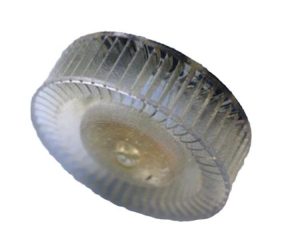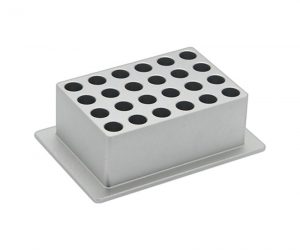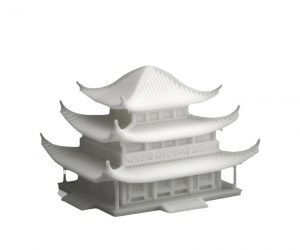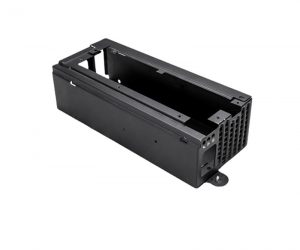Navigating the labyrinthine landscape of Chinese CNC parts manufacturing demands a discerning eye and a strategic approach that transcends superficial assessments. Merely ticking boxes on a checklist of "experience" and "quality" proves woefully inadequate. Success hinges on a far more nuanced understanding of the intricate interplay of factors that can elevate a project to triumph or precipitate it into a costly quagmire.
Beyond the Facade of Expertise: Claims of "extensive experience" require rigorous verification. Demand granular details: specific machine models utilized, demonstrable proficiency in your precise materials (consider the nuanced differences between aluminum alloys alone!), and verifiable case studies showcasing comparable complexity and tolerances. A portfolio showcasing aesthetically pleasing parts is insufficient; delve into the technical specifications and scrutinize the methodologies employed. A superficial glance will not reveal the subtle distinctions between genuine mastery and superficial competence.
Quality Control: A Proactive, Not Reactive, Approach: Certifications are merely entry-level indicators. Demand transparent access to their quality control protocols, including statistical process control (SPC) data, failure analysis methodologies, and corrective action plans. The absence of meticulously documented quality assurance processes should raise immediate red flags. Furthermore, consider the manufacturer's approach to risk mitigation – a proactive strategy is paramount to preventing catastrophic failures.
Technological Prowess: Beyond the Glossy Brochure: State-of-the-art equipment is a given; the true differentiator lies in the manufacturer's ability to effectively utilize that technology. Inquire about their CAM software proficiency, their expertise in optimizing machining parameters for your specific materials, and their capacity for advanced techniques like high-speed machining or five-axis milling. A technologically sophisticated facility without the skilled personnel to operate it is a recipe for disaster.
Turnaround Time: A Balancing Act of Speed and Precision: The allure of rapid turnaround times should not overshadow the paramount importance of quality. Probe the manufacturer's capacity planning and scheduling processes. Understand their contingency plans for unforeseen delays. A manufacturer boasting unrealistic lead times is likely sacrificing quality for expediency.
Customer Service: A Strategic Partnership, Not a Transaction: Effective communication transcends mere responsiveness. Seek evidence of proactive engagement, anticipating potential challenges and offering tailored solutions. Transparent pricing structures, devoid of hidden fees or ambiguous clauses, are essential. The willingness to collaborate on design optimization and problem-solving should be a non-negotiable expectation.
Cost: A Holistic Evaluation, Not a Sole Determinant: The lowest bid often masks hidden costs down the line. Thoroughly analyze the total landed cost, incorporating shipping, customs duties, potential rework, and the long-term implications of inferior quality. A cost-benefit analysis, factoring in potential risks and repercussions, is crucial.
Geopolitical Considerations: Beyond Mere Proximity: Location influences more than just shipping costs. Consider factors such as political stability, regulatory compliance, intellectual property protection, and the potential for supply chain disruptions. A seemingly advantageous location might harbor unforeseen risks that outweigh the benefits of proximity.
Selecting a CNC parts manufacturer in China is not a simple transaction; it's a strategic partnership demanding meticulous due diligence and a deep understanding of the complexities involved. A superficial approach will almost certainly lead to disappointment.
What is CNC in China?
CNC machining in China, that’s when they use computer-controlled machines to make all sorts of stuff. These machines do the heavy lifting based on a set of instructions they get from a program. Why is it such a hit over there? Well, for starters, it’s super precise and fast, plus you can switch tasks quickly. China has really gone all-in on this tech, pouring money into the latest machines and training up a bunch of experts in the field.
China has accumulated a wealth of experience in programming, operating and maintaining these machines. This has allowed it to take a leading position in the global CNC machining field and provide a wide range of services to various industries.
How do I choose a CNC mill?
Choosing the right CNC mill requires careful evaluation based on specific requirements and considerations. Here are some factors to consider:
- Precision and Accuracy: Assess the capabilities of the CNC mill in terms of precision and accuracy. This includes evaluating the tolerance levels it can achieve and the quality of finished parts it can produce.
- Size and Capacity: Determine the size and capacity of the CNC mill to ensure it can accommodate the desired workpiece sizes and production quantities. Consider the table size, spindle power, and the maximum weight the machine can handle.
- Speed and Efficiency: Look for a CNC mill that offers high-speed machining capabilities, quick tool changes, and efficient production processes. These factors contribute to increased productivity and reduced lead times.
- Software and Programming: Evaluate the software and programming capabilities of the CNC mill. Consider compatibility with CAD/CAM software, ease of programming, and the availability of technical support or training.
- Reliability and Support: Research the reputation of the manufacturer or supplier to ensure they have a track record of reliable products and excellent customer support. Read reviews, seek recommendations, and consider their experience in the industry.
What type of MFG is CNC machining considered?
CNC machining is basically like a high-tech carving session. It’s all about precision, where you start with a block of material and use some really smart machines to carve out exactly what you need.
CNC machining, a game-changer in manufacturing, combines several operations like milling, turning, drilling, and grinding to craft intricate and precise components. It’s the go-to method for industries ranging from aerospace to automotive, electronics, and medical devices. The secret sauce? CNC can produce top-notch, highly accurate parts that are consistently reliable.
Navigating the Labyrinthine World of Chinese CNC Machining: A Due Diligence Imperative
Selecting a CNC machining parts manufacturer in China demands a level of due diligence exceeding mere cursory investigation. The manufacturer's operational history and industry standing are not merely ancillary considerations; they represent foundational pillars upon which the success – or catastrophic failure – of your project rests. A superficial assessment risks entanglement in a web of unforeseen complications, jeopardizing both timelines and financial stability.
Deciphering the Manufacturer's Operational Provenance: Beyond Superficial Metrics
Evaluating a manufacturer's experience transcends a simple perusal of their years in operation. A truly rigorous assessment delves into the granular details of their project portfolio. Seek evidence of successful execution across a diverse range of complexities and scales. Mere longevity is insufficient; demonstrated proficiency in handling intricate designs, demanding tolerances, and high-volume production runs is paramount. The ability to navigate unforeseen technical challenges, adapting swiftly and efficiently, speaks volumes about their operational resilience. A seasoned manufacturer will not only possess the technical acumen to execute your specifications flawlessly but also offer insightful guidance on design optimization and material selection, leveraging their accumulated knowledge base to enhance your product's performance and cost-effectiveness. The absence of such demonstrable expertise should raise immediate red flags.
Unmasking the Manufacturer's True Reputation: Beyond Polished Testimonials
Assessing a manufacturer's reputation necessitates a multi-faceted approach that extends beyond the curated testimonials often presented on company websites. Independent verification is crucial. Scrutinize reviews from diverse online platforms, paying close attention not only to the volume of positive feedback but, critically, to the nature and frequency of negative comments. A consistent pattern of recurring complaints, even if seemingly minor, can signal deeper systemic issues. Directly contacting references provided by the manufacturer is essential, but treat such endorsements with a healthy dose of skepticism. Seek out independent industry contacts and leverage your professional network to gather unbiased perspectives. Remember, the absence of negative feedback can be as suspicious as an overwhelming presence of it. A truly reputable manufacturer will welcome rigorous scrutiny and provide transparent access to verifiable performance data. Compromising on this aspect invites potentially devastating consequences. The seemingly minor cost savings offered by a less reputable manufacturer are invariably eclipsed by the exponentially higher costs associated with rectifying defects, missed deadlines, and reputational damage to your own brand. Prioritize due diligence; the long-term ramifications of neglecting this critical step far outweigh any perceived short-term gains.
Assessing the Labyrinthine Quality Control Mechanisms of Chinese CNC Machining Part Manufacturers
Selecting a Chinese CNC machining parts manufacturer necessitates a rigorous, almost forensic, evaluation of their quality control (QC) processes. The superficial assessment of QC is insufficient; a deep dive into the intricacies of their methodologies is paramount to mitigating catastrophic downstream consequences. A truly reliable manufacturer will not merely possess a comprehensive QC system, but will demonstrate its robust, adaptive, and proactively evolving nature.
Raw Material Provenance and Purity: A Matter of Existential Risk
The initial phase, raw material inspection, transcends simple verification. It requires a granular understanding of the manufacturer's supply chain, including the provenance and certification of raw materials. Blind acceptance of supplier declarations is reckless; independent verification, potentially including metallurgical analysis and third-party audits, is mandatory. The purity and consistency of materials are not merely quality attributes; they represent the foundational bedrock upon which the entire manufacturing process rests. Compromise here propagates exponentially.
In-Process Vigilance: Navigating the Charybdis of Production
In-process inspection demands more than adherence to specifications; it demands a proactive, statistically-driven approach to anomaly detection. Real-time data acquisition and analysis, coupled with advanced process control (APC) systems, are essential for identifying and mitigating deviations before they escalate into cascading failures. The manufacturer's ability to demonstrate a robust statistical process control (SPC) program, including control charts and capability studies, is critical. Mere visual inspection is inadequate; sophisticated metrology and non-destructive testing (NDT) techniques must be employed.
Final Inspection: The Gauntlet of Acceptance
Final inspection is not a mere formality; it's the ultimate crucible where the cumulative effects of the entire manufacturing process are judged. A comprehensive final inspection program should incorporate destructive and non-destructive testing methods, including dimensional analysis, surface finish evaluation, material testing, and functional performance testing, often exceeding customer specifications to ensure robust product reliability. The sampling methodology employed must be statistically sound, and the rejection criteria must be clearly defined and rigorously enforced.
Calibration Conundrums: The Shadow of Measurement Uncertainty
Calibration control is not simply a matter of maintaining calibrated equipment; it's a battle against the insidious creep of measurement uncertainty. The manufacturer's calibration program must be traceable to national or international standards, and the frequency of calibration must be commensurate with the criticality of the measurements. The competence of calibration personnel, documented through training records and certifications, is paramount.
Documentation Deluge: The Archiving of Accountability
The documentation system is not merely a repository of data; it's the irrefutable chronicle of the manufacturing process. A robust DMS must provide complete traceability, allowing for the precise reconstruction of the manufacturing history of any given part. This necessitates not only meticulous record-keeping but also the implementation of robust data management systems capable of handling large volumes of data and ensuring data integrity. The absence of a comprehensive, auditable documentation system is a red flag of potentially significant quality control deficiencies.
Choosing a CNC machining parts manufacturer requires a discerning eye, a critical mind, and an unwavering commitment to due diligence. The evaluation process should be exhaustive, leaving no stone unturned. Only through rigorous scrutiny can the potential for costly quality issues and production delays be effectively mitigated.
Navigating the Labyrinthine Landscape of Chinese CNC Machining: A Critical Assessment of Capacity, Lead Times, and Capabilities
Selecting a CNC machining parts manufacturer in China demands a sophisticated understanding beyond superficial assessments of price and delivery. The intricate interplay of production capacity, lead times, and technological capabilities dictates not only project feasibility but also the very survival of your enterprise within a fiercely competitive global market. Failure to meticulously evaluate these factors can lead to catastrophic delays, compromised quality, and ultimately, financial ruin.
Production Capacity: Beyond Mere Numbers
Production capacity isn't simply a numerical output; it's a multifaceted assessment of a manufacturer's operational resilience. A stated capacity of X units per month is meaningless without rigorous verification. Demand a detailed breakdown of their equipment, its utilization rate, and crucially, the skillset and experience of their workforce. Generic claims of "skilled labor" are insufficient; demand demonstrable evidence of expertise in the specific materials and machining techniques relevant to your project. Scrutinize their track record: request case studies of comparable projects, focusing on their ability to consistently deliver high-quality components under pressure. A manufacturer boasting impressive capacity but lacking demonstrable experience is a recipe for disaster. Furthermore, investigate their supply chain robustness; disruptions in raw material procurement can cripple even the most technologically advanced facility.
Lead Times: Deconstructing the Illusion of Speed
Lead times are not merely the interval between order placement and delivery; they represent a complex web of interdependent processes. Demand a granular breakdown of each stage, from raw material sourcing and quality control to machining, finishing, and shipping. Insist on precise completion dates for each phase, coupled with contingency plans to mitigate foreseeable delays. Overseas manufacturing introduces inherent logistical complexities; factor in potential port congestion, customs clearance hurdles, and the vagaries of international shipping. A manufacturer promising unrealistically short lead times should be treated with extreme skepticism; such claims often mask inadequate capacity or a disregard for quality control. Moreover, investigate their quality assurance protocols; rushed production invariably compromises quality, leading to costly rework or even project failure.
Capabilities: Beyond the Breadth, the Depth
A diverse range of capabilities is essential, but the depth of expertise within those capabilities is paramount. A manufacturer claiming expertise in "various materials and technologies" requires rigorous scrutiny. Demand specific examples of their proficiency in the materials and processes relevant to your project. Generic statements are insufficient; demand verifiable evidence of their experience with specific alloys, tolerances, and surface finishes. A manufacturer boasting a wide array of capabilities but lacking deep expertise in your specific requirements is a potential liability. Furthermore, investigate their investment in research and development; a commitment to innovation is crucial for navigating the ever-evolving landscape of CNC machining technology. A stagnant manufacturer is a risky investment.
Conclusion: Due Diligence is Paramount
Choosing a CNC machining partner in China is a strategic decision with far-reaching consequences. A superficial evaluation based solely on price and lead time promises is a recipe for disaster. Rigorous due diligence, demanding verifiable evidence of capacity, experience, and technological prowess, is not merely advisable; it's absolutely essential for ensuring project success and safeguarding your business interests. Remember, the cost of failure far outweighs the investment in thorough pre-selection.
Navigating the Labyrinthine Landscape of Chinese CNC Machining: A Pragmatic Approach to Risk Mitigation
The selection of a CNC machining parts manufacturer in China demands a level of due diligence exceeding mere cursory investigation. A naive approach risks not only compromised product quality but also significant financial and reputational damage. Therefore, the strategic acquisition of references and samples transcends mere prudence; it constitutes a fundamental prerequisite for engagement.
Firstly, the solicitation of references should not be a perfunctory exercise. A simple list of names is insufficient. Demand detailed contact information, including verifiable business affiliations and project specifics. Engage in direct communication with these references, probing beyond superficial affirmations of satisfaction. Inquire about unforeseen challenges, production delays, and the manufacturer's responsiveness to corrective actions. Seek quantifiable metrics of performance, such as on-time delivery rates and defect percentages. The absence of readily available, comprehensively detailed references should raise significant red flags.
Secondly, the acquisition of samples is not merely a visual inspection; it's a rigorous, multi-faceted evaluation. Request multiple samples representing diverse production runs, encompassing a spectrum of materials, tolerances, and surface finishes. Subject these samples to comprehensive testing, exceeding the manufacturer's stated specifications. Employ independent laboratory analysis to validate dimensional accuracy, material composition, and mechanical properties. Discrepancies between samples or deviations from specified tolerances should trigger a thorough investigation into the manufacturer's quality control processes and their capacity for consistent production. The mere presentation of a single, seemingly flawless sample is insufficient; it's a deceptive façade concealing potential systemic deficiencies.
Furthermore, consider the strategic implications of your sample requests. Request samples that mirror the complexity and precision requirements of your intended production run. This allows for a realistic assessment of the manufacturer's capabilities, revealing potential limitations that might not be apparent from simpler samples. The ability to consistently meet tight tolerances, particularly in complex geometries, is a critical indicator of a manufacturer's technological prowess and operational maturity.
In conclusion, the selection of a Chinese CNC machining manufacturer is a high-stakes decision demanding a sophisticated, multi-layered approach. The passive acceptance of assurances and superficial demonstrations of capability is a recipe for disaster. By demanding comprehensive references and subjecting samples to rigorous scrutiny, you mitigate risk, secure quality, and establish a foundation for a successful and mutually beneficial manufacturing partnership. Failure to undertake this level of due diligence is not merely negligent; it's strategically reckless.




